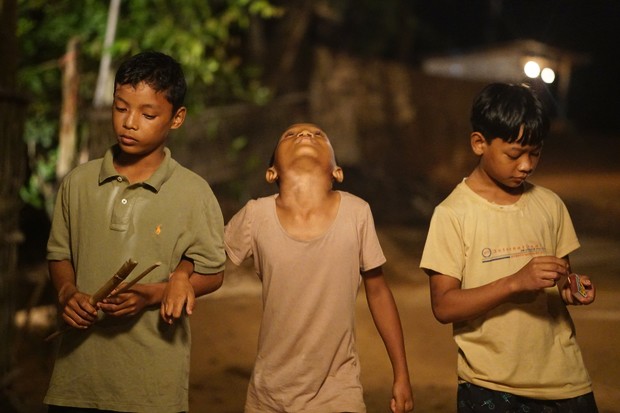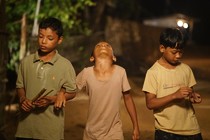LOCARNO 2023 Cineasti del presente
Review: Rapture
- Indian director Dominic Sangma explores fear and societal tensions in his sophomore feature and Locarno debut

“Either it’s night, or we don’t need light,” reads the opening of Rapture [+see also:
trailer
film profile], the sophomore feature by Indian filmmaker Dominic Sangma. Indeed, nocturnal darkness cloaks the film’s central premise: everything is not only possible, but permissible, when the lights are out. This rare Indian-Chinese-Swiss co-production has premiered in Locarno’s Cineasti del Presente competition, which spotlights emerging talent from around the globe. Sangma was successful with his first film, 2018’s MA.AMA, on the global festival circuit, but his presence at Locarno already makes him a discovery for the European art-film scene. With a penchant for beautiful compositions and contemplative scenes, he observes life as it unfolds in the village where he grew up. Only now, he returns to fictionalise stories that haunted him as a child back then, through the eyes of ten-year-old Kasan (Torikhu A Sangma), whose night blindness doesn’t save him from witnessing the fearsome complexities of adult life.
The second part of his thematic trilogy on village life, Rapture was shot on location in the (largely Christian) state of Meghalaya in Northeast India, and the personal intimacy that Sangma evokes is made palpable through the evocative images shot by cinematographer Tojo Xavier: his static, long shots imbue landscapes and people with equal grandeur. Xavier uses deep focus to bring a certain familiarity to the village, which fits perfectly with the tight-knit social tension. At the beginning, the villagers are out to catch a special kind of rare cicada that appears at night every two years. Even at night-time, the camera’s delicate presence guides the way, thickening the inexplicable mystery of the plot: a young man named Mangkungchi has disappeared without a trace.
While the villagers try to uncover what (or who) is behind the vanishing, the pastor (Celestine K Sangma) announces the advent of a miraculous statue of the Virgin Mary which blesses every Christian dwelling. Yet, this good news comes at a price: an ominous darkness that will last 80 days. The dark is the enemy – more and more disappear as the abstract fear starts to take shape. Rumours of unknown others, kidnappers whose aim is to supply the local hospital with organs for transplant, start to simmer. Anger, frustration and suspicion creep up and grip the villagers. In the meantime, Kasan is curious enough to roam around freely, regardless of his night blindness.
It’s rare for European audiences to get a chance to become acquainted with a Garo-language film that toes the line of a genre such as a social thriller, while also delivering a humanistic message against preconceived fear and prejudice towards the other. Rapture is one such example that captures the subtle contradictions that drive human nature and society as a structure. There is always a choice: to use darkness as an excuse, or to embrace it in order to make room for the light.
Rapture was produced by Anna Films, and co-produced by Joicy Studio, Uncombed Buddha, Visions Sud Est, the Hubert Bals Fund of International Film Festival Rotterdam, and the Doha Film Institute.
Did you enjoy reading this article? Please subscribe to our newsletter to receive more stories like this directly in your inbox.


















